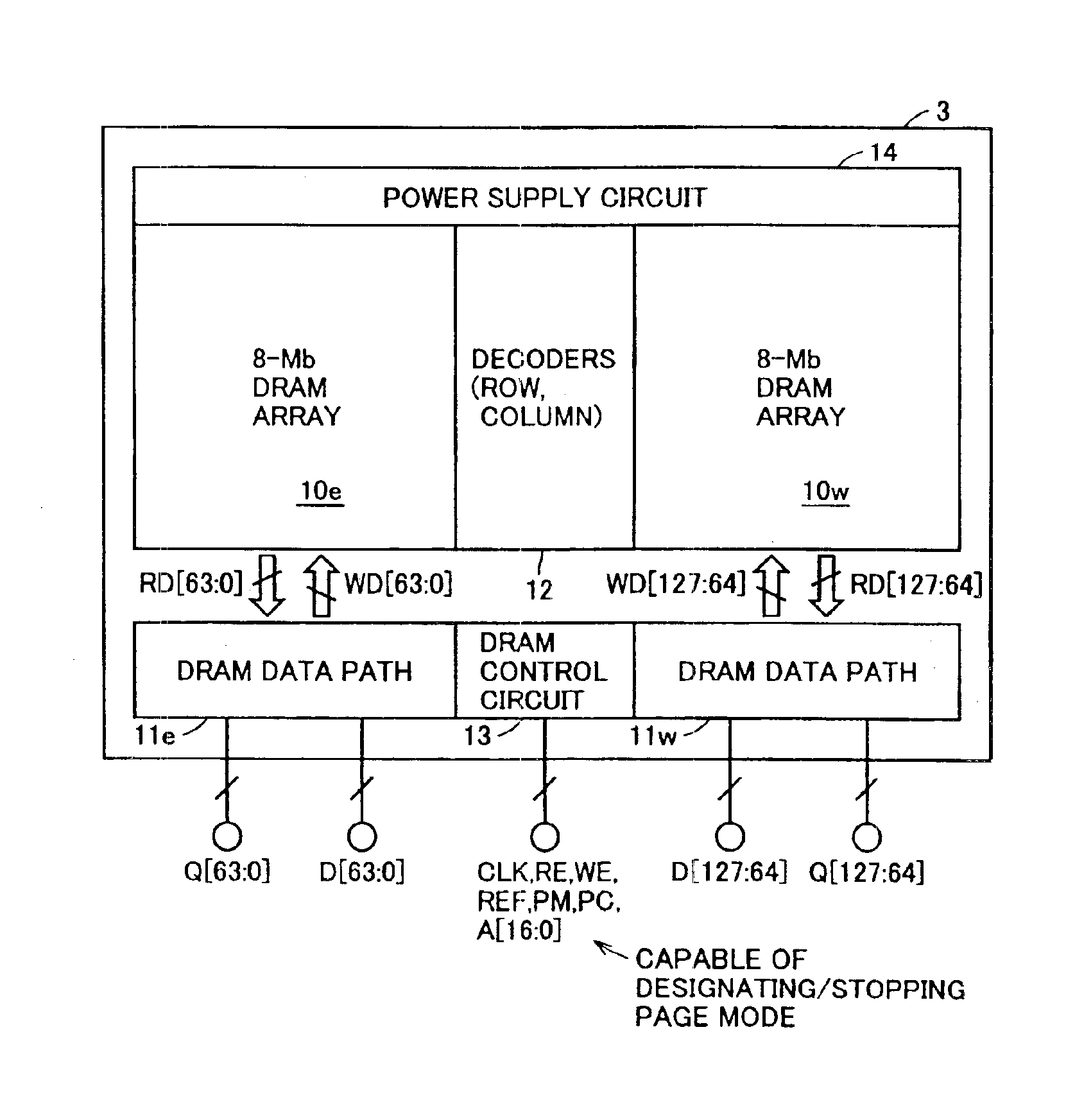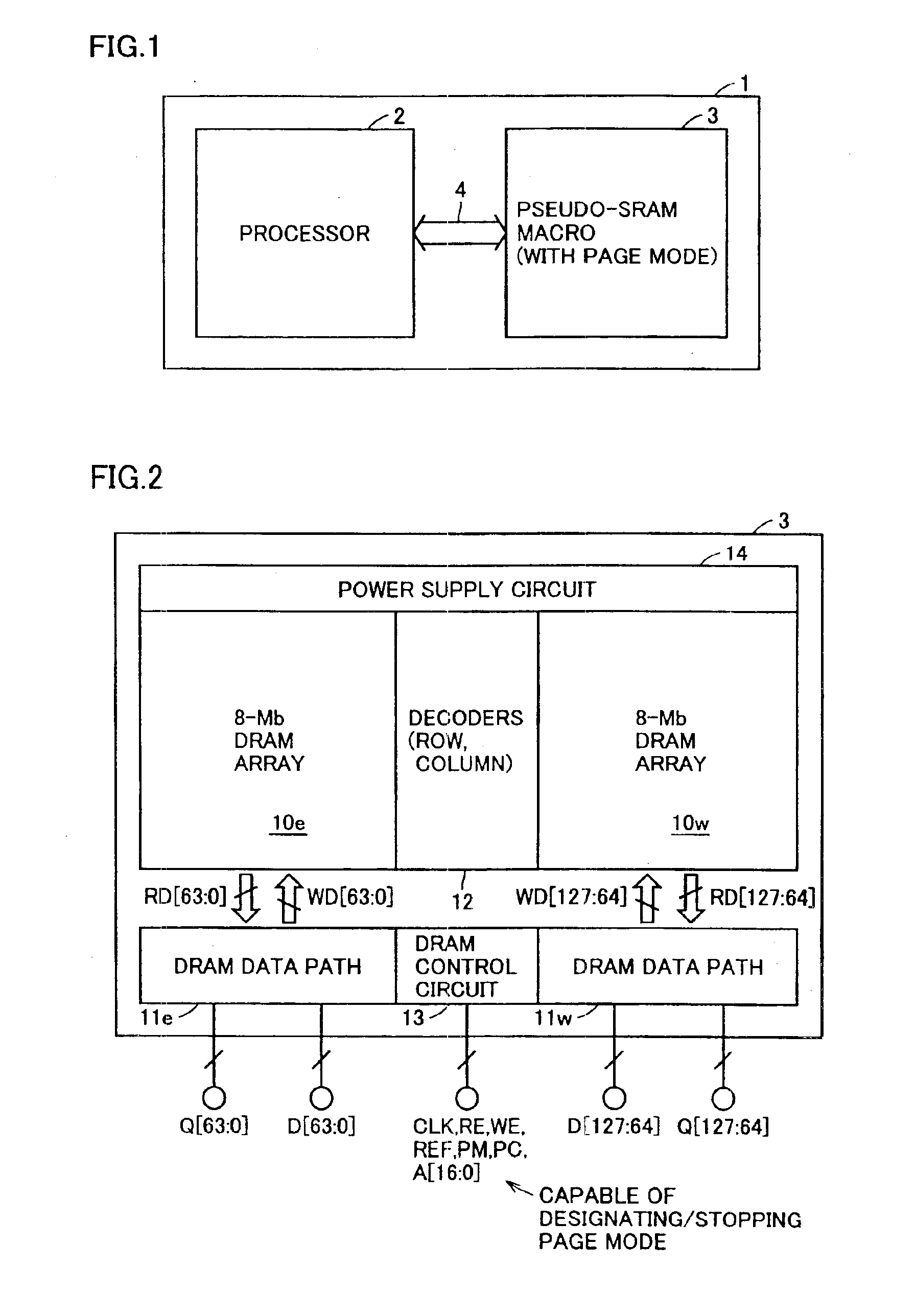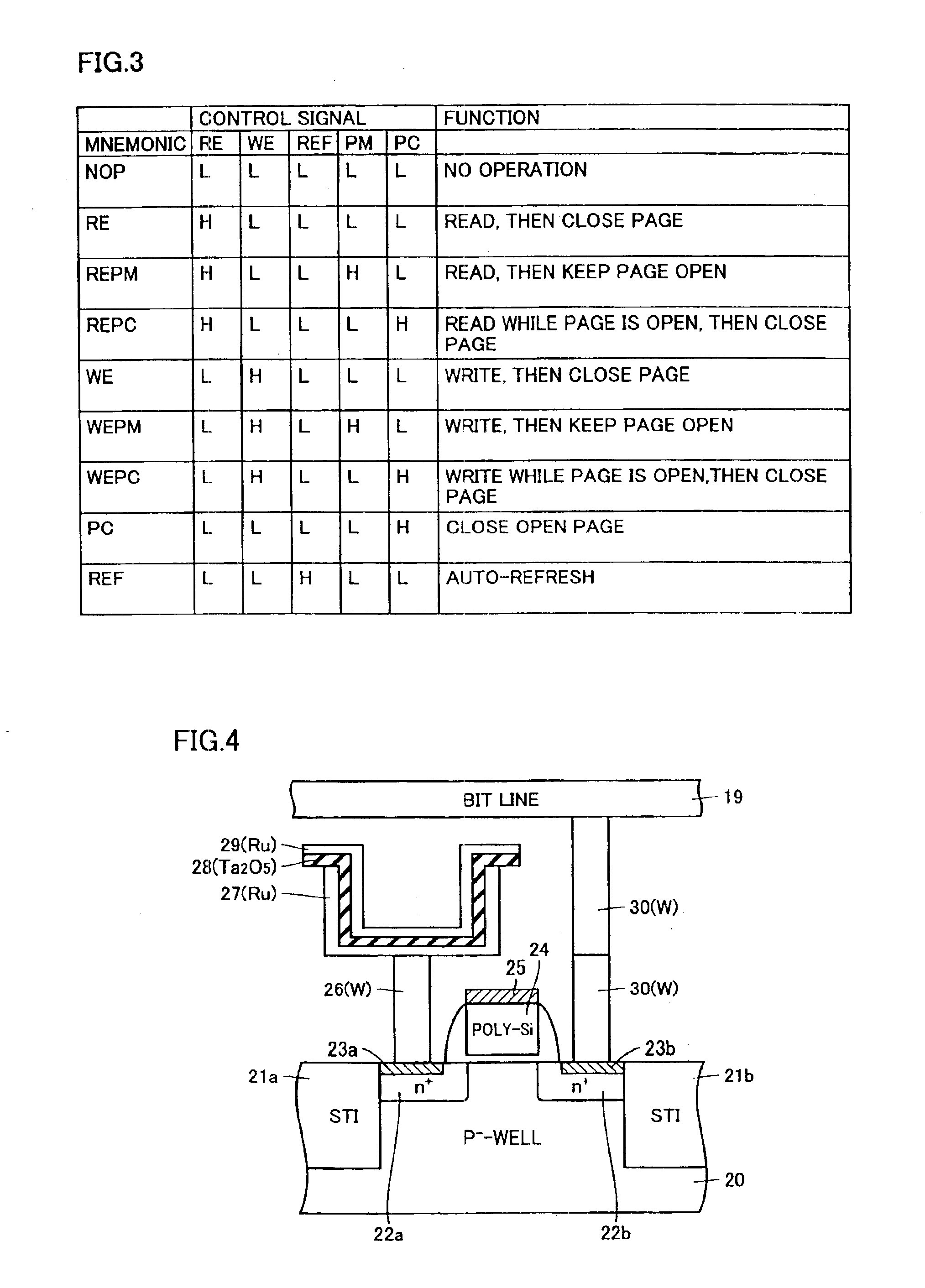Pseudo-static synchronous semiconductor memory device
a semiconductor memory and synchronous technology, applied in static storage, information storage, digital storage, etc., can solve the problems of reducing system performance, reducing system performance, and reducing system performance, and achieve the effect of low power consumption
- Summary
- Abstract
- Description
- Claims
- Application Information
AI Technical Summary
Benefits of technology
Problems solved by technology
Method used
Image
Examples
first embodiment
FIG. 1 schematically shows a structure of a system LSI incorporating a synchronous semiconductor memory device according to the present invention. In FIG. 1, a system LSI 1 includes a processor 2 and a pseudo-SRAM macro 3 storing data required at least by processor 2. Processor 2 externally transmits and receives signals and data and executes required processing. Processor 2 may be a circuit dedicated to a predetermined processing, or may be a general-purpose processor.
Pseudo-SRAM macro 3 communicates data with processor 2 via an internal data bus 4. Pseudo-SRAM macro 3 can operate in a page mode, and processor 2 can access pseudo-SRAM macro 3 in a page mode for transferring data.
System LSI 1 is integrated on a common semiconductor chip. Internal data bus 4 is formed of on-chip interconnection lines, and can have a sufficiently large bus width without suffering from a restriction by pin terminals.
Since pseudo-SRAM macro 3 can operate in the page mode, precharging of the row-related ...
second embodiment
FIG. 32 illustrates truth values of commands according to a second embodiment of the invention. In the second embodiment, as shown in FIG. 32, when read operation instructing signal RE, write operation instructing signal WE, refresh operation instructing signal REF, page mode operation instructing signal PM and page close instructing signal PC are all set to the H level, a mode register set command MRS is applied. When mode register set command MRS is applied, data for specifying an operation mode can be externally stored in a mode register. By using mode register set command MRS, the page mode operation can be selectively functioned.
Specifically, when address bit A[0] is set to the L level when mode register set command MRS is applied, as shown in FIG. 33, the page mode operation is inhibited. When address bit A[0] is set to the H level, the page mode can be utilized. Other address bits A[16:1] are arbitrary (“don't care” state) when the page mode is set.
In the page mode operation,...
third embodiment
FIG. 36 schematically shows a structure of a pseudo-SRAM macro 3 according to a third embodiment of the invention. In pseudo-SRAM macro 3 shown in FIG. 36, 8-Mbit DRAM array 10e is divided into a bank-A array 120ea and a bank-B array 120eb. Also, 8-Mbit DRAM array 10w is divided into a bank-A array 120wa and a bank-B array 120wb.
A bank-A decoder 122a is provided corresponding to bank-A arrays 120ea and 120wa, and a bank-B decoder 122b is provided corresponding to bank-B arrays 120eb and 120wb. Each of bank-A decoders 122a and 122b includes a row decoder and a column decoder.
Pseudo-SRAM macro 3 shown in FIG. 36 includes two banks A and B. Therefore, a DRAM control circuit 124 is supplied with 16-bit address signal A[15:0] and a 1-bit bank address signal BA instead of address signal A[16:0]. One of banks A and B is designated in accordance with bank address signal BA.
DRAM control circuit 124 includes a control circuit for bank A, a control circuit for bank B and a control circuit sha...
PUM
 Login to View More
Login to View More Abstract
Description
Claims
Application Information
 Login to View More
Login to View More - R&D
- Intellectual Property
- Life Sciences
- Materials
- Tech Scout
- Unparalleled Data Quality
- Higher Quality Content
- 60% Fewer Hallucinations
Browse by: Latest US Patents, China's latest patents, Technical Efficacy Thesaurus, Application Domain, Technology Topic, Popular Technical Reports.
© 2025 PatSnap. All rights reserved.Legal|Privacy policy|Modern Slavery Act Transparency Statement|Sitemap|About US| Contact US: help@patsnap.com



